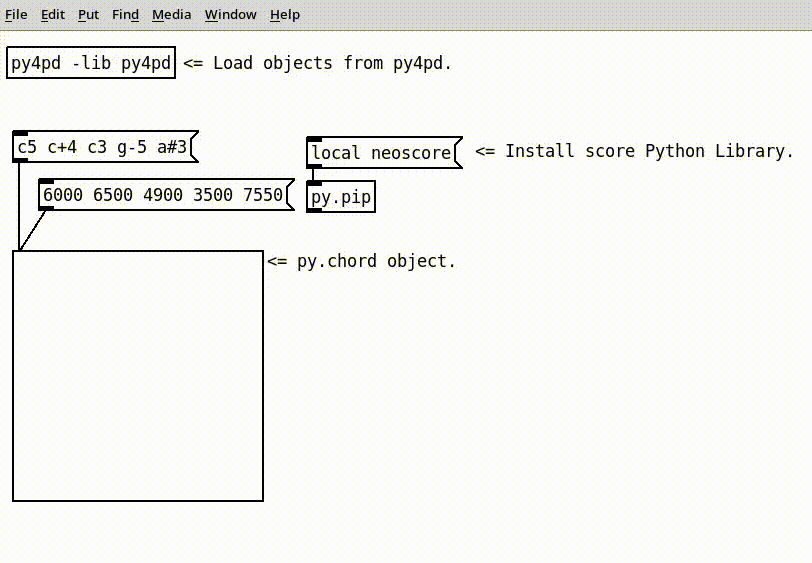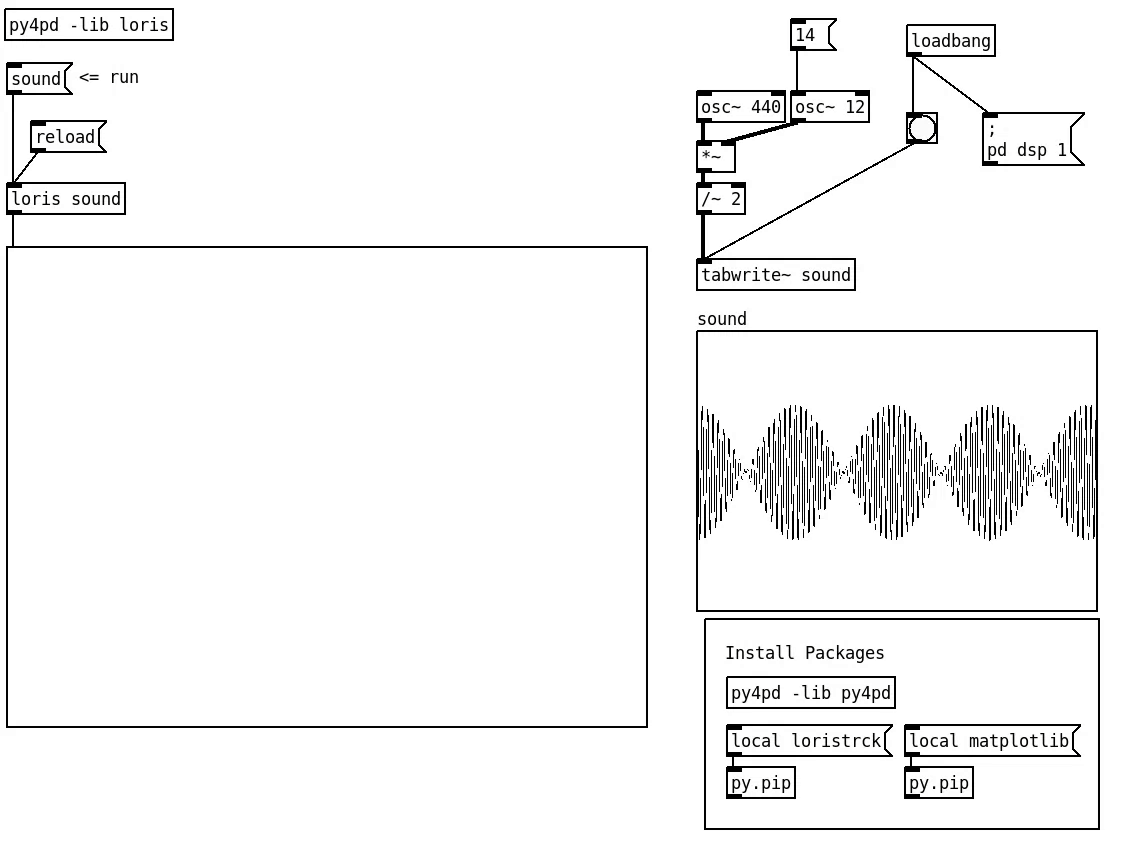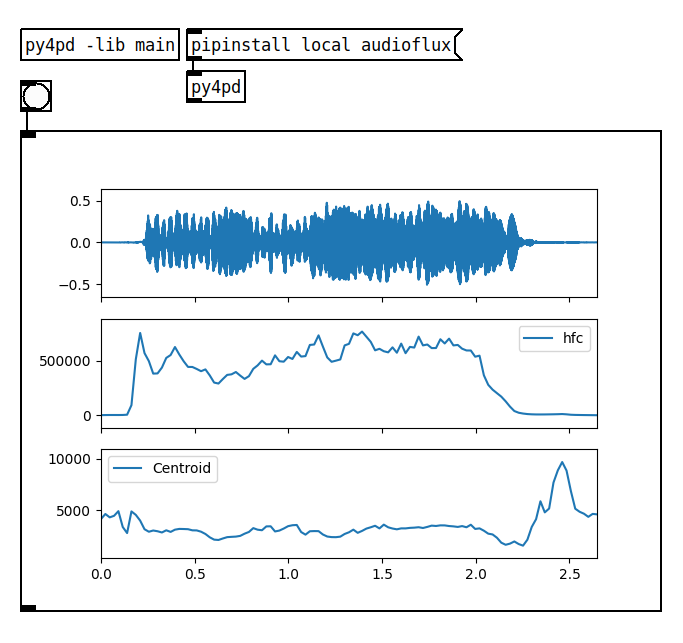Introduction
Welcome to the py4pd documentation!
What is py4pd?
py4pd integrates the power of Python into the real-time environment of PureData. Besides providing means for score visualization, AI integration, audio analysis tools, SVG/drawing score handling, and various other functionalities, you can create PureData Objects using Python. If you use OpenMusic or BachLibrary, you will find some inspiration in it.
-
Create PureData Objects With Python
-
I don't program!
How to install?
To check how to install go to Installation.
Examples and Use Cases
Here are presented tools implemented with py4pd. Users are encouraged to contribute their examples through Github .
When I started to work with PureData, I missed score visualization tools. py4pd can easily solve this using neoscore.

It is easy to use AI with py4pd. There are already powerful objects for real-time, like nn~ and ddsp~, but they are designed to specify approaches. Below is an example using py4pd and the Python code used by nn~ (offline processing).

Python Code
To illustrate the statement "Python offers a more accessible and user-friendly alternative than C and C++", presented earlier, here is an example of Python code:
import pd # py4pd library
import torch # Library of AI
import librosa # Library to load audios in Python
def renderAudio_nn(audio, model):
model = pd.get_patch_dir() + '/' + model # get the pathname of model.ts, which is the result of the IA trained.
audio = pd.get_patch_dir() + '/' + audio # The audio source
torch.set_grad_enabled(False) # config of the IA
model = torch.jit.load(model).eval() # Load model of IA
x = librosa.load(audio)[0] # take the audio samples of the sound (audio)
x_for = torch.from_numpy(x).reshape(1, 1, -1) # transform the audio to fit in the IA model
z = model.encode(x_for) # the black box
z[:, 0] += torch.linspace(-2, 2, z.shape[-1]) # No idea;
y = model.decode(z).numpy().reshape(-1) # Now we have sound again!
pd.tabwrite('iaAudio', y.tolist(), resize=True) # Here we write the sound in the table 'iaAudio'.
pd.print('Audio rendered')
In this example, I use the SVG file above to render sounds using the new else/plaits~. Besides earplug~, and cyclone/coll. The colors control the plaits~ parameters.
In Python, there is not just one Spectral Analysis package. I mainly use loristrck because of the .sdif files. But there is simpl, librosa, PyAudio_FFT, among others. If you want spectral manipulations you can work with pysdif3 which is fast and amazing. Here is an example using loristrck in PureData.

You can use some of the Audio Descriptors provided by audioflux for some analysis.

Pieces
Eco (2023) is the first version of one under-developing piece that uses some concepts of the composer Ricardo Thomasi in his PhD research. The idea here is to use smartphones/tablets put in the performance music stand, to make real-time FFT and Partial Tracking and then, generate scores that are played. The smartphones/tablets send data to PureData, and using py4pd, we generate real-time scores using neoscore.
The piece Moteto aims to be a rereading of a medieval motet. In addition, to overlapping independent voices, we use Just Intonation structures. With the help of technology, I aim to make the piece playable, also by amateur choirs, it is available on this website: www.charlesneimog.com/moteto/.